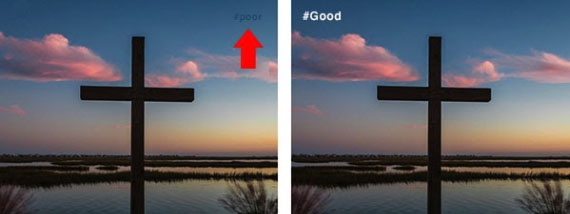Whether you call it the pound or tic-tac-toe symbol, the hashtag is a tiny but powerful tool. When followed by a keyword, a hashtag telegraphs big ideas in a simple way across social media.
A good hashtag generates church or event interest and engagement by way of likes or new followers through social media commenting or sharing. The strategic use of a hashtag makes events or topical posts easily trackable, searchable and archivable.
We’ve talked about hashtags before, but all technology changes. A refresher is timely.
“Hashtags help you reach a target audience, and more importantly, they help your target audience find you,” according to Hubspot. Your target is the people “[most] likely to engage with your post because your post is exactly what they wanted.”
A poor hashtag dilutes even the best-crafted message, creates unfortunate associations or backfires and lives forever online.
Follow these simple tips to prevent #HashtagFails for church events, promotions or message threads.
Meaningful
The goal is to capture the theme or idea behind an event or topic in a word or two. Focus on short, high-impact words instead of branding. For instance:
🚫 #FirstUMCWinterBazaar
✓ #WinterWOW
Hashtags should spark imagination and emotion, not identify the location or sponsor of the event. Use your account name (i.e., @FirstUMCScottsville) in the post text instead.
Plan strategically by addressing questions like these suggested by SocialAlert blog:
- Who’s your target audience?
- What’s the most relevant platform (Twitter/Facebook/Instagram) for your campaign?
- Where’s your target audience most active?
- What’s the purpose behind the hashtag campaign?
- How’s the hashtag clarifying the purpose of what is planned?
Short
Trim ruthlessly. Remember, the idea behind a hashtag is to communicate a big idea efficiently. People won’t take the time to type (or copy) a long hashtag. In character-limited forums like Twitter, long hashtags are sacrificed or user-modified to allow for more characters in a post.
Ask yourself, “Is there a way to shorten this?” For example:
🚫 #WinterArtMarketAtThePark
✓ #ArtAtThePark or #TheArtOfWinter
Fewer characters make a difference. Research suggests up to 20 characters is optimal.
BONUS: #If #You #Use #Too #Many #Hashtags #You #Are #Doing #It #Wrong. No more than two hashtags in a post is a good rule of thumb.
Skimmable
How long did it take you to decode #theartofwinter? What about #TheArtOfWinter? For readability, capitalize the first letter of every word, including conjunctions (and), articles (the) and prepositions (of). Capitalization is the only way of separating words since punctuation (, . - _) and symbols (& @ +) break hashtags.
Pay attention to the font size and color of hashtags superimposed on images. Use a font color and size that contrasts with the image.

Flashback to middle school
Remember how everything was loaded with innuendo in middle school? Hashtags are similar. If double meanings are ignored or if a post seems disingenuous, you’re in for a #HashtagFail or hijack — if not a full-blown PR disaster. Remember: The. Internet. Never. Forgets.
Before promoting a hashtag, think twice before posting. Consider if there’s any possible way it might go wrong (timing, wording) or any possible way it can be misinterpreted. Examples of failed hashtag use abound, and large brands are not immune.
Research
Research any hashtags you’re considering in advance. Determine if they’re already widely in use by someone else or if they make a cultural reference that could create negative associations.
Check what hashtags are trending to see if you can contribute relevantly and naturally while reaching new people. Don’t piggyback on a hashtag just because it’s trending. Be authentic, not needy.
Publicize
Who are your influencers? These are the most valuable people to amplify your message genuinely to a larger group of your target market or friends-of-friends. Ask these influencers, your internal planning team members, church staff and members to use your selected hashtags early and often in all related social media posts to build momentum and interest.
If your promotional plans include printed materials, add the official hashtag in a prominent place. Also, invite participants to use the hashtag before, during and after an event or campaign.
Be mindful to master the art of #hashtags. Use these simple steps both to stay out of internet infamy and to reach more people as you promote and build a community.

Jeremy Steele is the associate pastor at Los Altos UMC in Los Altos, California, as well as a writer and speaker. You can find a list of all his books, articles and resources for churches, including his most recent book All the Best Questions, at his website: JeremyWords.com.
______________________________________________________________________________________________________________________________________________________
Social media is more than being social. It’s a ministry. United Methodist Communications is using social media to inform, encourage, motivate, inspire, and engage followers of Christ--and we are resourcing churches to do the same. These efforts require financial support. If you believe in our mission, consider a tax-deductible donation to the work of United Methodist Communications through its Foundation at ResourceUMC.org/GiveUMCom.

